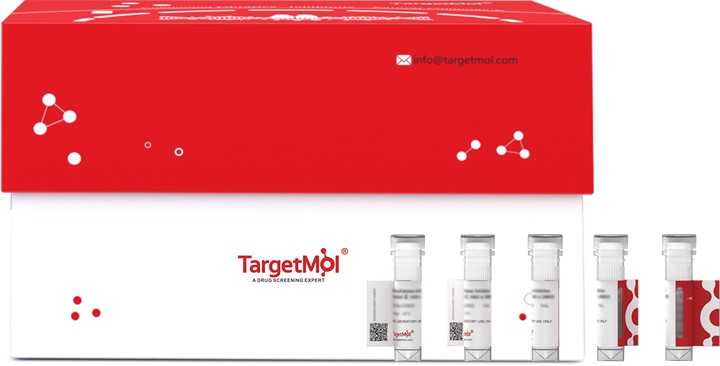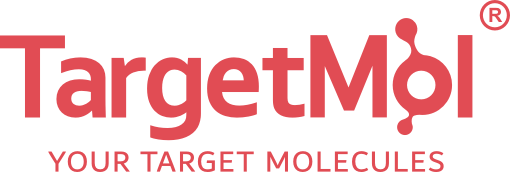- 全部删除
 您的购物车当前为空
您的购物车当前为空
EDF1 Protein, Human, Recombinant (His)
Endothelial Differentiation-Related Factor 1 (EDF1) is a 148 amino acid transcriptional coactivator that contains 1 HTH cro/C1-type DNA-binding domain. It has been postulated that the protein functions as a bridging molecule that interconnects regulatory proteins and the basal transcriptional machinery, thereby modulating the transcription of genes involved in endothelial differentiation. When endothelial cells are induced to differentiate in vitro, EDF1 is downregulated, leading to inhibition of cell growth and cell polarization. EDF1 binds calmodulin thorough its IQ domain and regulates nitric oxide synthase activity through calmodulin sequestration in the cytoplasm. Though ubiquitously expressed, EDF1 is most abundant in adult liver, heart, adipose tissues, intestine and pancreas. In fetal tissues, EDF1 is most abundant in kidney. There are two isoforms of EDF1 that are produced as a result of alternative splicing events.

EDF1 Protein, Human, Recombinant (His)
| 规格 | 价格 | 库存 | 数量 |
|---|---|---|---|
| 10 μg | ¥ 1,170 | 5日内发货 | |
| 50 μg | ¥ 3,470 | 5日内发货 | |
| 500 μg | ¥ 12,100 | 5日内发货 | |
| 1 mg | ¥ 17,400 | 5日内发货 |
产品信息
| 生物活性 | Activity has not been tested. It is theoretically active, but we cannot guarantee it. If you require protein activity, we recommend choosing the eukaryotic expression version first. |
| 产品描述 | Endothelial Differentiation-Related Factor 1 (EDF1) is a 148 amino acid transcriptional coactivator that contains 1 HTH cro/C1-type DNA-binding domain. It has been postulated that the protein functions as a bridging molecule that interconnects regulatory proteins and the basal transcriptional machinery, thereby modulating the transcription of genes involved in endothelial differentiation. When endothelial cells are induced to differentiate in vitro, EDF1 is downregulated, leading to inhibition of cell growth and cell polarization. EDF1 binds calmodulin thorough its IQ domain and regulates nitric oxide synthase activity through calmodulin sequestration in the cytoplasm. Though ubiquitously expressed, EDF1 is most abundant in adult liver, heart, adipose tissues, intestine and pancreas. In fetal tissues, EDF1 is most abundant in kidney. There are two isoforms of EDF1 that are produced as a result of alternative splicing events. |
| 种属 | Human |
| 表达系统 | E. coli |
| 标签 | C-6xHis |
| 蛋白编号 | O60869 |
| 别名 | Multiprotein-Bridging Factor 1,MBF1,Endothelial Differentiation-Related Factor 1,EDF-1,EDF1 |
| 氨基酸序列 | Ala2-Lys148 |
| 蛋白构建 | Ala2-Lys148 |
| 蛋白纯度 | Greater than 95% as determined by reducing SDS-PAGE. (QC verified) |
| 分子量 | 16-20 KDa (reducing condition) |
| 内毒素 | < 0.1 ng/µg (1 EU/µg) as determined by LAL test. |
| 缓冲液 | Lyophilized from a solution filtered through a 0.22 μm filter, containing 20 mM Tris-HCl, 150 mM NaCl, pH 8.0. |
| 复溶方法 | Reconstitute the lyophilized protein in distilled water. The product concentration should not be less than 100 μg/ml. Before opening, centrifuge the tube to collect powder at the bottom. After adding the reconstitution buffer, avoid vortexing or pipetting for mixing. |
| 存储 | Lyophilized powders can be stably stored for over 12 months, while liquid products can be stored for 6-12 months at -80°C. For reconstituted protein solutions, the solution can be stored at -20°C to -80°C for at least 3 months. Please avoid multiple freeze-thaw cycles and store products in aliquots. |
| 运输方式 | In general, Lyophilized powders are shipping with blue ice. Solutions are shipping with dry ice. |
| 研究背景 | Endothelial Differentiation-Related Factor 1 (EDF1) is a 148 amino acid transcriptional coactivator that contains 1 HTH cro/C1-type DNA-binding domain. It has been postulated that the protein functions as a bridging molecule that interconnects regulatory proteins and the basal transcriptional machinery, thereby modulating the transcription of genes involved in endothelial differentiation. When endothelial cells are induced to differentiate in vitro, EDF1 is downregulated, leading to inhibition of cell growth and cell polarization. EDF1 binds calmodulin thorough its IQ domain and regulates nitric oxide synthase activity through calmodulin sequestration in the cytoplasm. Though ubiquitously expressed, EDF1 is most abundant in adult liver, heart, adipose tissues, intestine and pancreas. In fetal tissues, EDF1 is most abundant in kidney. There are two isoforms of EDF1 that are produced as a result of alternative splicing events. |




